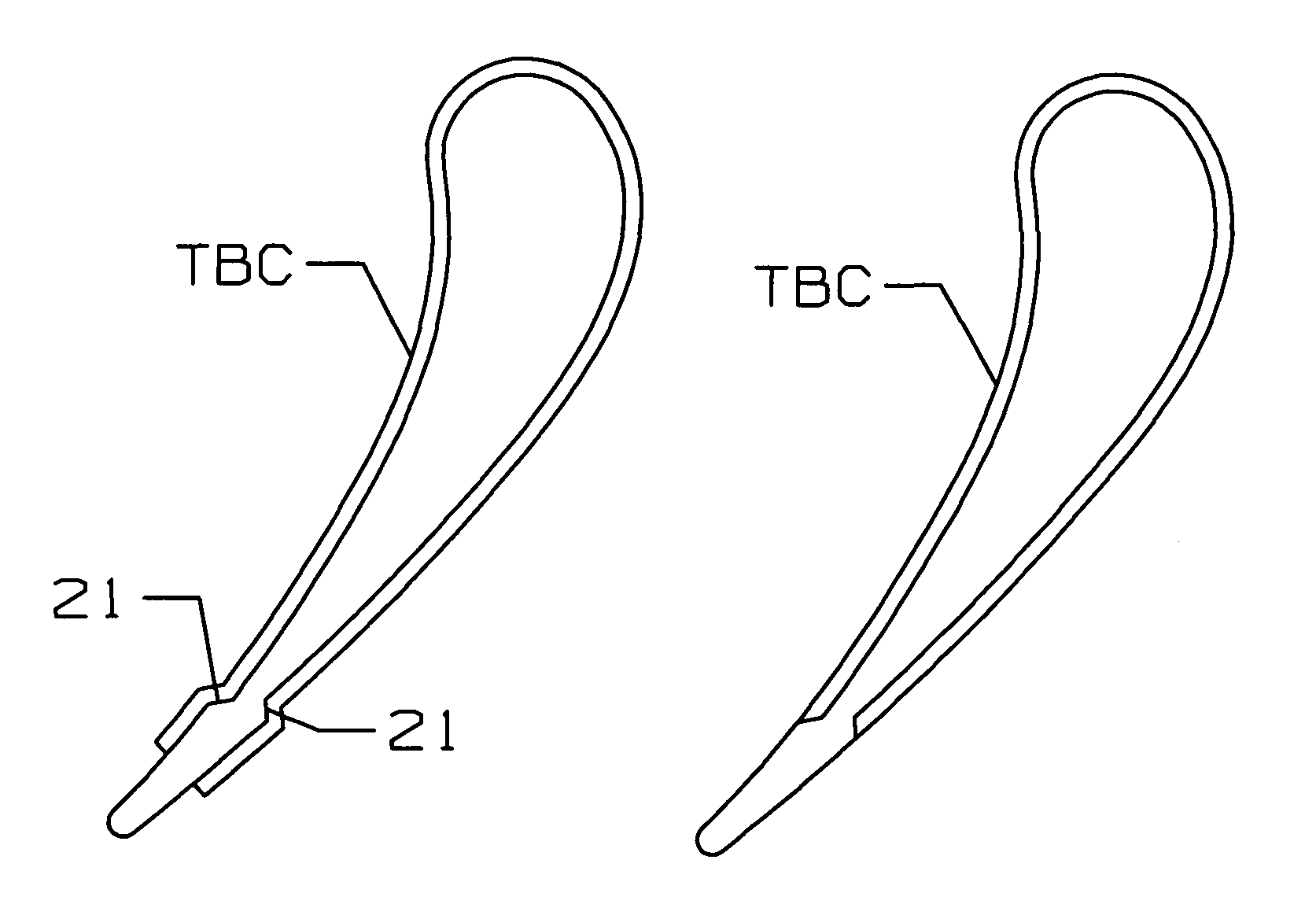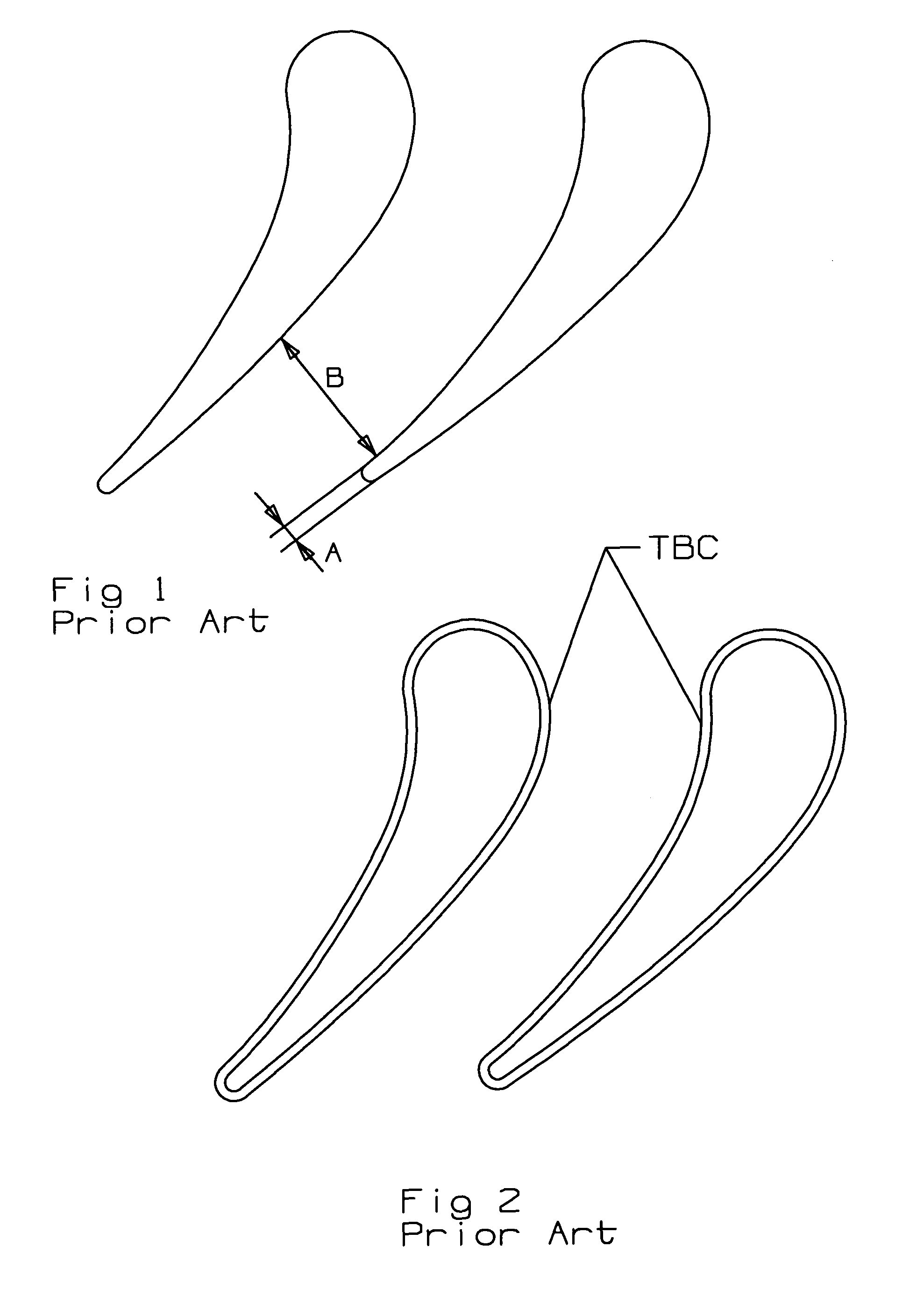Turbine airfoil with trailing edge
a technology of trailing edge and turbine, which is applied in the direction of liquid fuel engines, vessel construction, marine propulsion, etc., can solve the problems of airfoil with a surface contour that is aerodynamically undesirable, slow acceleration, and higher specific fuel consumption, and achieve the effect of improving the sensitivity to spallation
- Summary
- Abstract
- Description
- Claims
- Application Information
AI Technical Summary
Benefits of technology
Problems solved by technology
Method used
Image
Examples
second embodiment
[0023]the present invention is shown in FIG. 5. The final airfoil outer contour is shown in FIG. 5b in which the coating extends around the airfoil with a thickness and tapers off at the trailing edge region to a thickness of zero. The metal airfoil outer contour is reduced so that the coating will provide the final desired outer airfoil contour. In the FIG. 5 embodiment, a local increase in the airfoil trailing edge thickness is formed to accommodate strip masking. The tapered outer surface (21 on the pressure side and 22 on the suction side) at the trailing edge region allows for the TBC to smoothly progress from normal thickness to a zero thickness while the outer airfoil contour (metal surface and TBC) remains smooth. The relatively thick TBC will then blend into the outer airfoil surface and maintain the ideal surface contour critical to aerodynamic performance. Control of the trailing edge geometry is critical to aerodynamic performance, particularly on the pressure side.
[0024...
third embodiment
[0025]the present invention is shown in FIG. 6. Control of the trailing edge geometry is critical to aerodynamic performance. To improve control of the coated trailing edge contour, the underlining airfoil is formed with locally raised bumps or tear drops 31 which will enable the coating to be stoned or lapped to the ideal contour. A number of these raised bumps 31 are located along the airfoil trailing edge and each has a height equal to the desired thickness of the coating. The bumps 31 are preferably cast into the airfoil surface when the airfoil is cast. The coating is then applied over the bumps 31 to cover the bumps 31 such that the bumps 31 are no longer visible. When the coating has hardened, the outer surface of the coating is removed by the stoning or lapping process down to the level of the bumps 31 so that the remaining coating has the desired thickness. The raised bumps 31 can be used a visual indicator of when the coating is at the desired thickness, or can be used to ...
PUM
 Login to View More
Login to View More Abstract
Description
Claims
Application Information
 Login to View More
Login to View More - R&D
- Intellectual Property
- Life Sciences
- Materials
- Tech Scout
- Unparalleled Data Quality
- Higher Quality Content
- 60% Fewer Hallucinations
Browse by: Latest US Patents, China's latest patents, Technical Efficacy Thesaurus, Application Domain, Technology Topic, Popular Technical Reports.
© 2025 PatSnap. All rights reserved.Legal|Privacy policy|Modern Slavery Act Transparency Statement|Sitemap|About US| Contact US: help@patsnap.com



